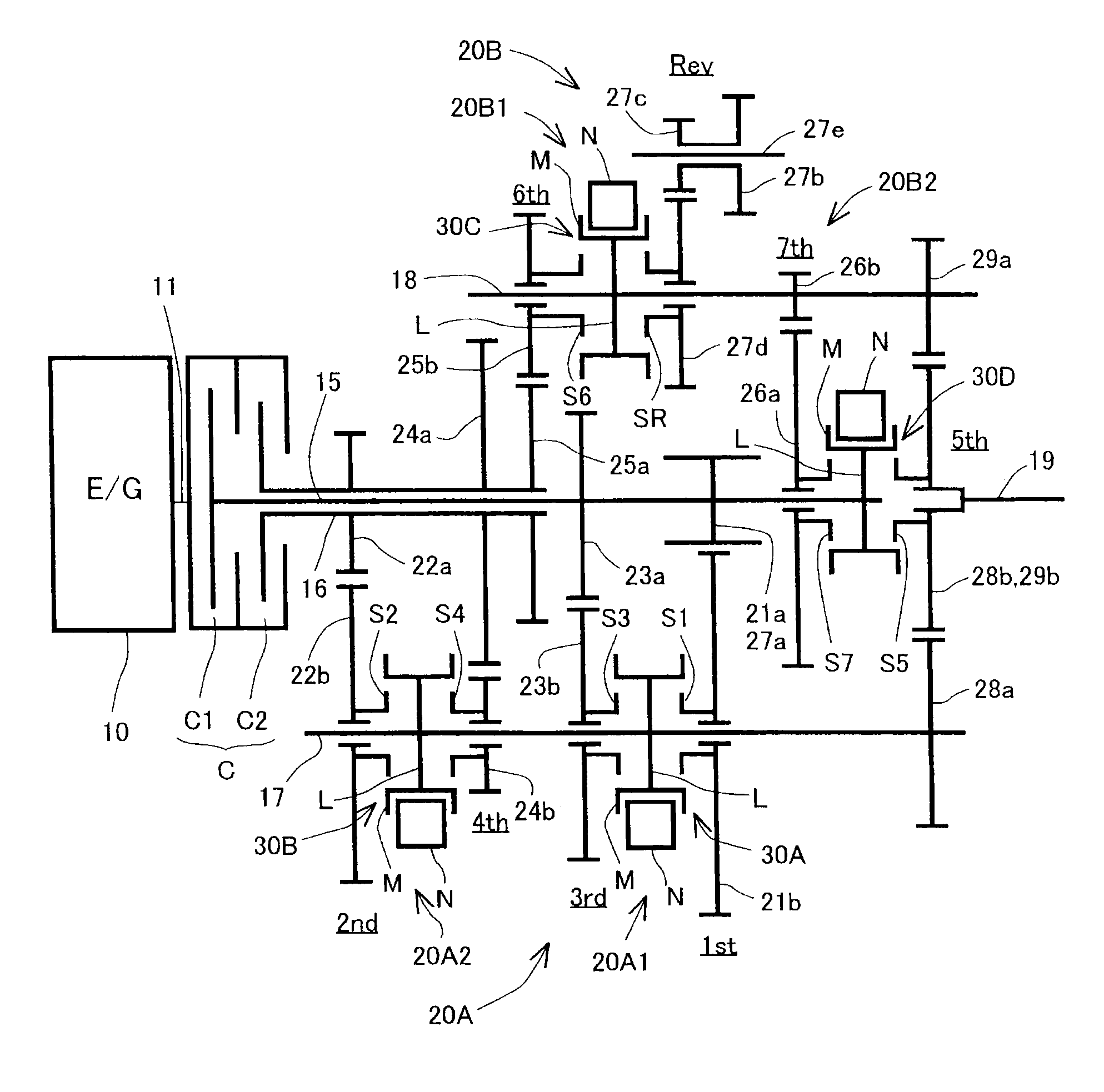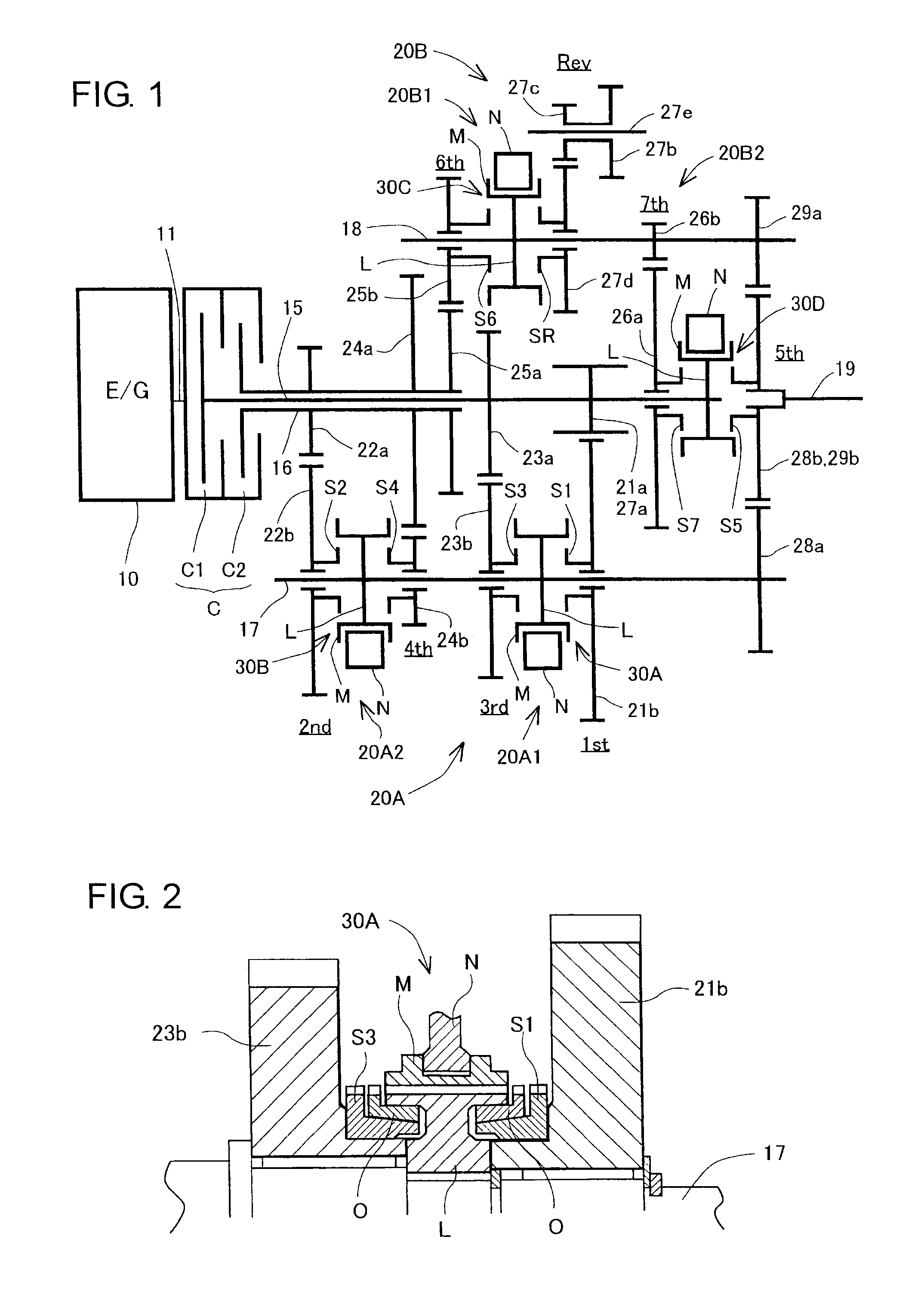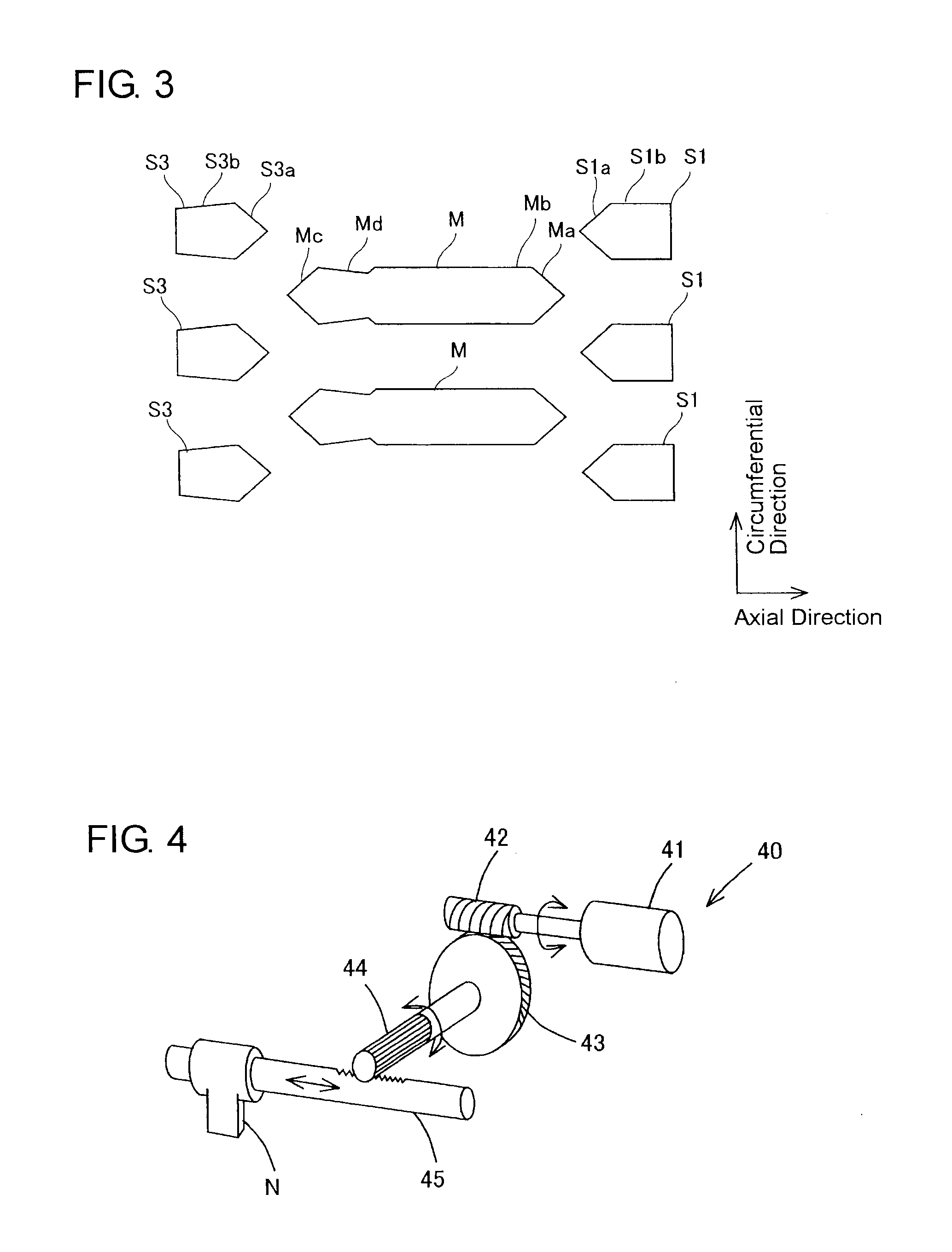Automatic dual-clutch transmission
a dual-clutch transmission and automatic technology, applied in mechanical actuated clutches, transportation and packaging, gearing, etc., to achieve the effect of reducing manufacturing costs, reducing the drive power of the shift actuator, and reducing contact load
- Summary
- Abstract
- Description
- Claims
- Application Information
AI Technical Summary
Benefits of technology
Problems solved by technology
Method used
Image
Examples
first embodiment
Operation of First Embodiment
[0050]Next, the operation of the automatic dual-clutch transmission 1 in the first embodiment will be described with reference to FIG. 5. A controller (not shown) for the transmission 1 controls the first and second friction clutches C1, C2 of the dual clutch C and the first to fourth shift clutches 30A-30D to operate as indicated in FIG. 5 in dependence on the operating states of the vehicle such as throttle opening degree, engine rotational speed, vehicle speed and the like. In the state of an out-of-operation, the first and second friction clutches C1, C2 of the dual clutch C are both released, and each of the first to fourth shift clutches 30A-30D is in the neutral position.
[0051]Even when the engine 10 is started with the vehicle remaining stopped, the same state as the aforementioned state of the out-of-operation is maintained. When a shift lever (not shown) of the dual-clutch gear transmission 1 is set to a forward position after the engine 10 is ...
second embodiment
Operation of Second Embodiment
[0089]Next, the operation of the automatic dual-clutch transmission 100 in the second embodiment will be described with reference to FIG. 8. A controller (not shown) for the transmission 100 controls the first and second friction clutches C1, C2 of the dual clutch C and the first to fourth shift clutches 130A-130D to operate as indicated in FIG. 8 in dependence on the operating states of the vehicle such as throttle opening degree, engine rotational speed, vehicle speed and the like. In the state of an out-of-operation, the first and second friction clutches C1, C2 of the dual clutch C are both released, and each of the first to fourth shift clutches 130A-130D is in the neutral position.
[0090]When the engine 10 is operated with the vehicle remaining stopped, the same state as the aforementioned state of the out-of-operation is maintained. When a shift lever (not shown) of the dual-clutch gear transmission 100 is set to a forward position after the engin...
PUM
 Login to View More
Login to View More Abstract
Description
Claims
Application Information
 Login to View More
Login to View More - R&D
- Intellectual Property
- Life Sciences
- Materials
- Tech Scout
- Unparalleled Data Quality
- Higher Quality Content
- 60% Fewer Hallucinations
Browse by: Latest US Patents, China's latest patents, Technical Efficacy Thesaurus, Application Domain, Technology Topic, Popular Technical Reports.
© 2025 PatSnap. All rights reserved.Legal|Privacy policy|Modern Slavery Act Transparency Statement|Sitemap|About US| Contact US: help@patsnap.com



